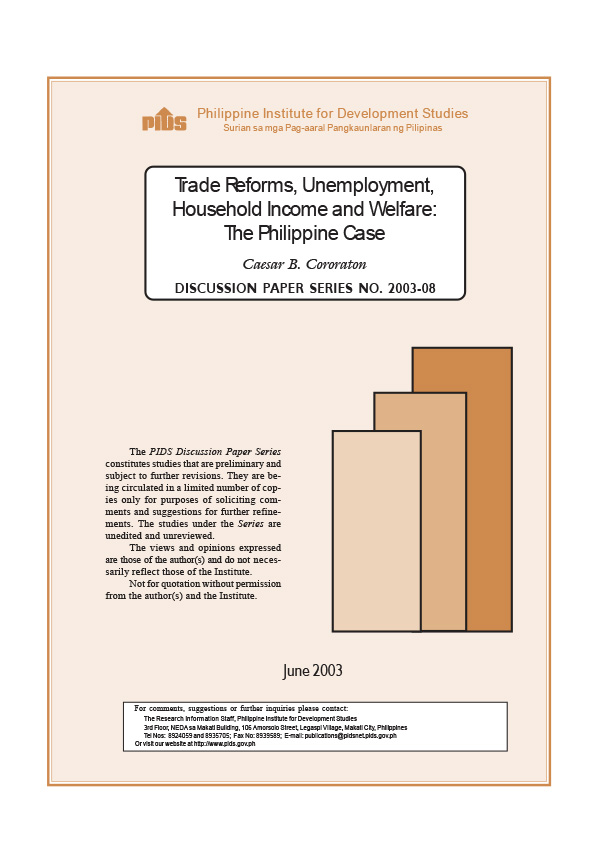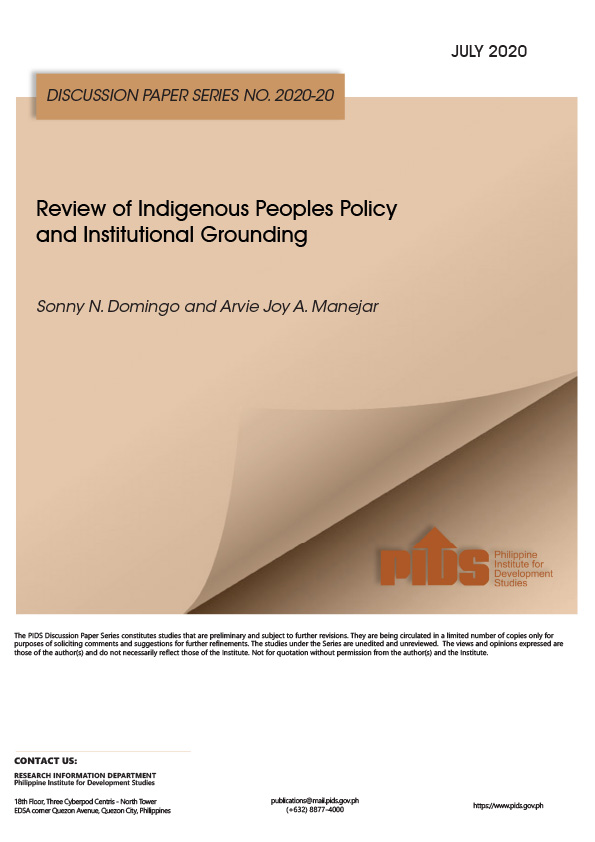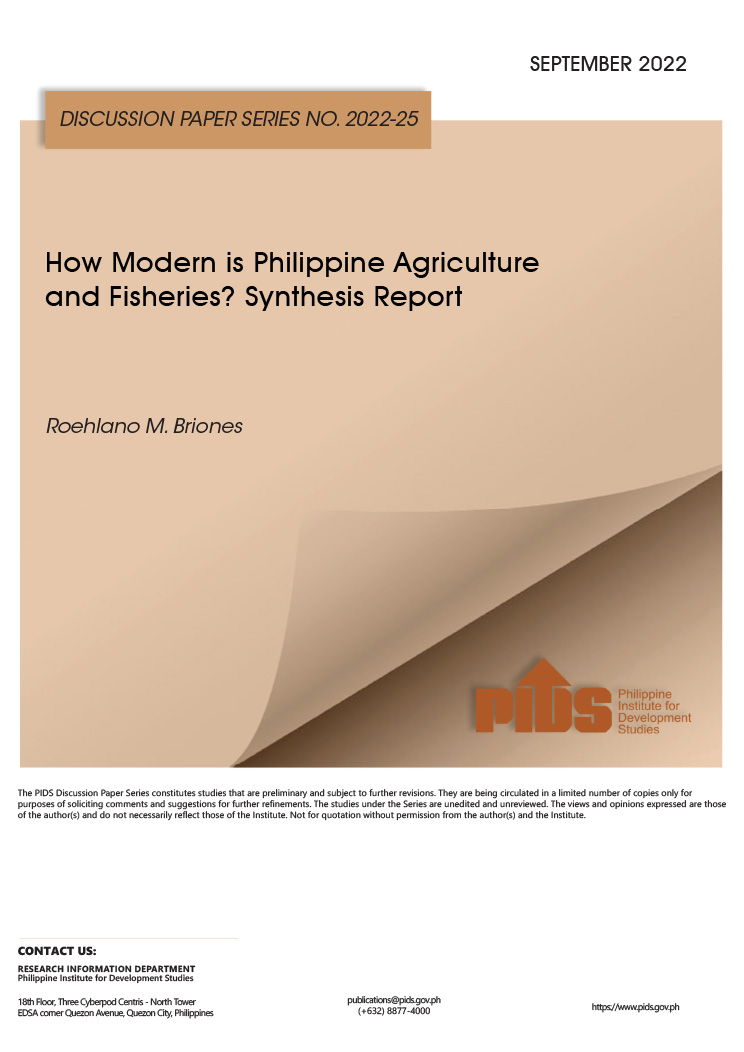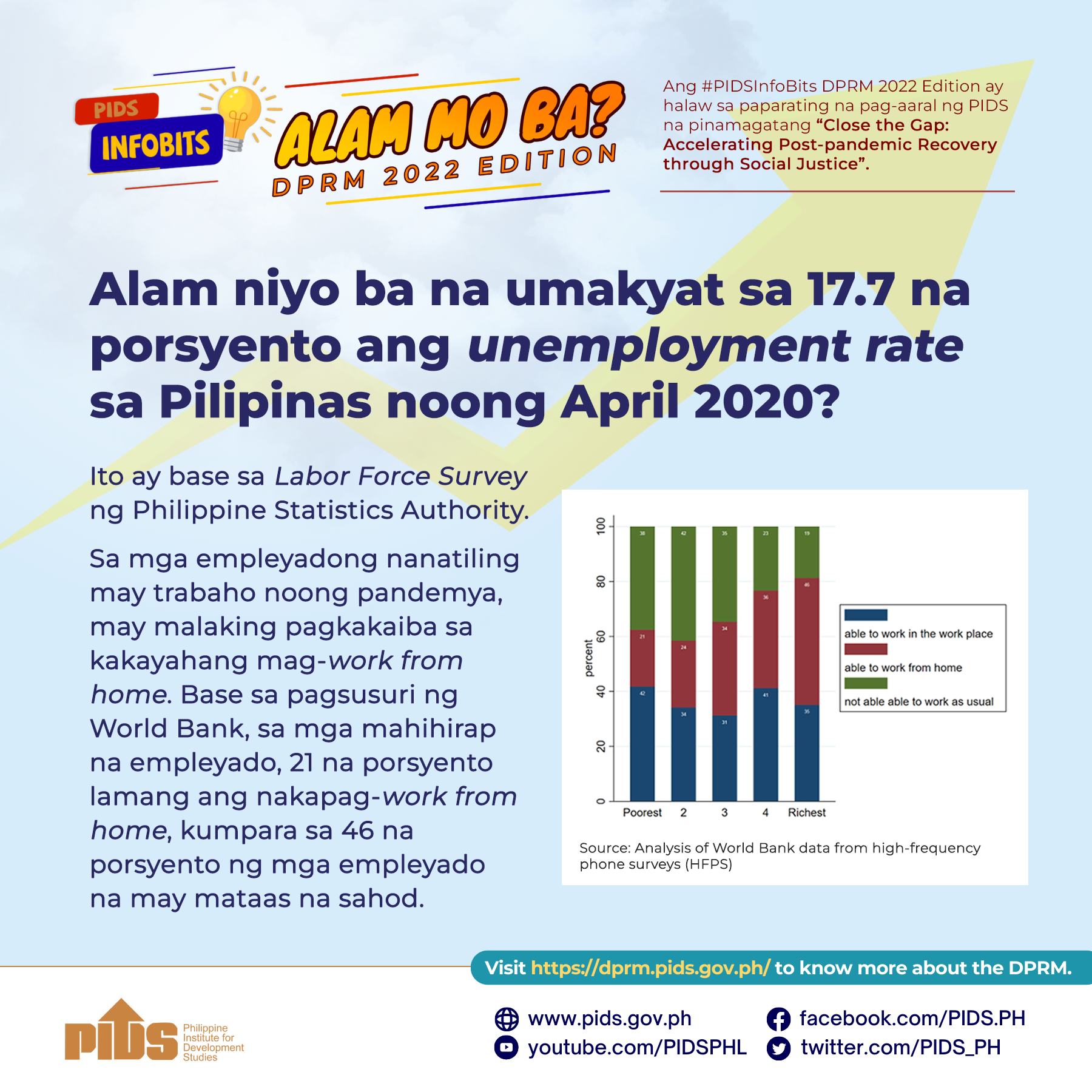The paper analyzes the possible effects of tariff reduction in the 1990s on unemployment, household income and household welfare using a computable general equilibrium model calibrated to the 1994 social accounting matrix. The series of simulation experiments indicate that tariff reduction is welfare improving. The transmission channel is not so much through the improvement in household income, but through the reduction in domestic and consumer prices. In terms of resource reallocation effects and factor movements, the nonfood manufacturing sector benefits the most. As a result, unemployment in production labor declines while its wages improve. However, agriculture sector contracts which results in higher unemployment in the sector and lower agriculture wages.
Citations
This publication has been cited 1 time
- Cororaton, Caesar B.. 2003. Analysis of trade reforms, income inequality and poverty using microsimulation approach: The case of the Philippines. Discussion Papers DP 2003-09. Philippine Institute for Development Studies.













